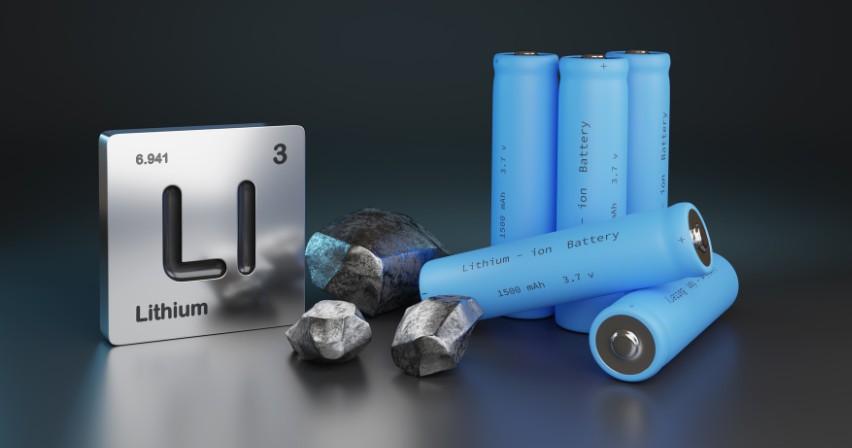
Welcome, tech fans! This blog tackles the intriguing battle of LiFePO4 vs Lithium-ion. Ready for a thrilling exploration of these energy titans? Hold tight, as we delve deep into the guts, the good, and the not-so-good of both battery types!
What is LiFePO4 battery?
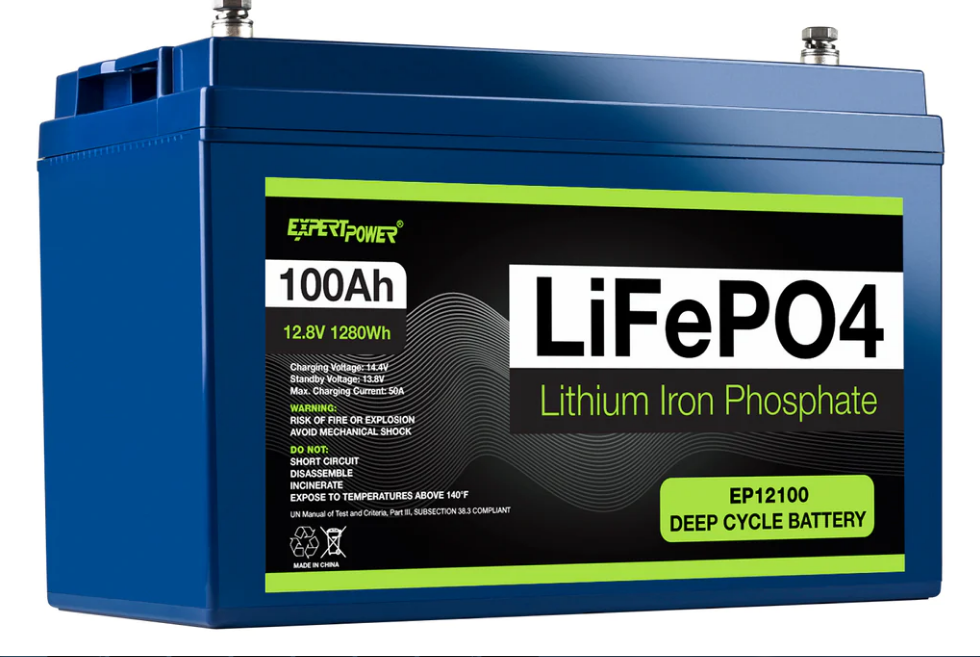
A LiFePO4 battery is a type of power source. In short, LiFePO4 stands for Lithium Iron Phosphate. Each battery contains four key parts: a cathode, anode, electrolyte, and separator.
The cathode includes iron phosphate (FePO4) which offers high safety. Additionally, the battery uses lithium ions during charging and discharging processes.
LiFePO4 batteries have around 2000 – 3000 charge cycles. Remember, a ‘charge cycle’ refers to a full discharge followed by a full charge. Power density of these batteries is about 1,500 W/kg.
What is Lithium-ion battery?
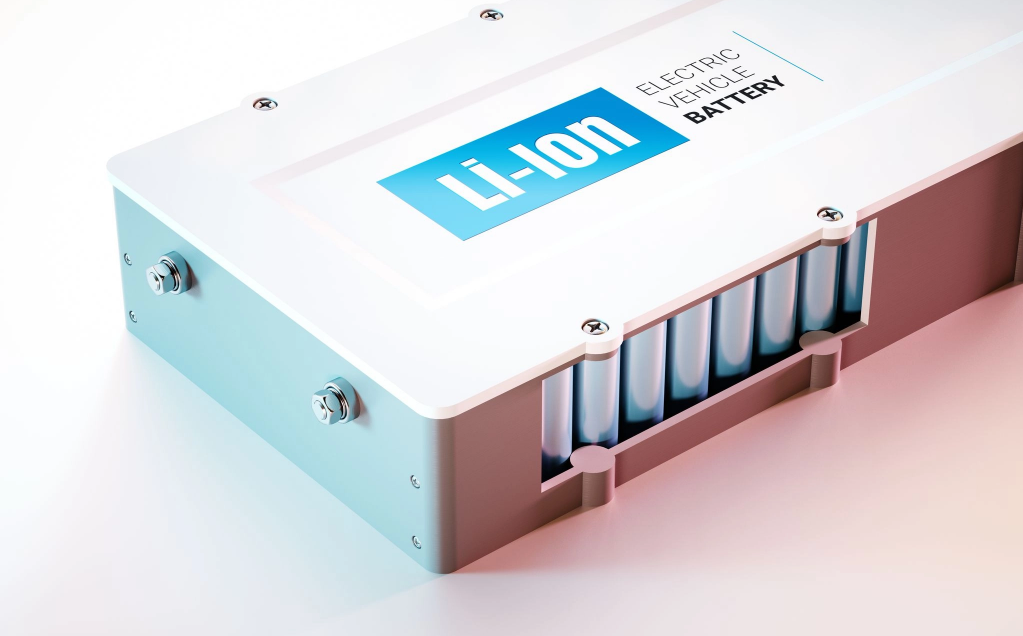
On the other hand, a Lithium-ion battery, often called Li-ion, serves as a common power source. Comprising a cathode, anode, electrolyte, and separator, the materials vary. Notably, the cathode might contain compounds like Lithium Cobalt Oxide (LiCoO2).
Li-ion batteries tend to have fewer charge cycles, typically around 500 – 1000. A significant parameter, the energy density, stands around 150 Wh/kg for a typical Li-ion battery.
Consequently, Li-ion batteries provide high energy densities, beneficial for numerous applications. However, LiFePO4 vs Lithium-ion, Li-ion does possess lower cycle life and may pose higher safety risks.
The Underlying Technology Behind LiFePO4 and Lithium-ion!
· Cathode Material
In both batteries, the cathode plays a big role. The LiFePO4 battery uses iron phosphate, while the Lithium-ion battery employs a mix of cobalt, nickel, and manganese. Such choices influence the battery’s price, power, and safety levels.
· Anode Composition
For anodes, both types utilize carbon. Yet, their microscopic structures differ, affecting energy capacity. High-quality carbon gives Lithium-ion batteries an edge, while LiFePO4 offers better stability.
· Electrolyte Function
The electrolyte lets ions move between electrodes. In both types, organic lithium salts serve this role. Yet, Lithium-ion’s slightly different formulation supports faster ion movement.
· Interfacial Reactions
Reactions at the electrode-electrolyte interfaces impact battery life. LiFePO4 batteries face less stress, offering a longer life cycle, whereas Lithium-ion batteries show quicker energy transfer due to intense reactions.
· Ion Conductivity
Both battery types rely on lithium ions moving through the electrolyte. Higher conductivity means faster charging and discharging. Lithium-ion has a slight advantage here
· Charge Carriers
Lithium ions are the charge carriers. They travel from the anode to the cathode during discharge. Both types use the same carrier, but Lithium-ion holds more, delivering higher energy density.
· Battery Management
Effective battery management extends lifespan. While both types require monitoring, Lithium-ion demands a more robust system due to its higher energy density.
· Voltage Thresholds
The operating voltage range impacts battery performance. LiFePO4 operates at a lower voltage than Lithium-ion, contributing to its stability and safety.
· Cycle Efficiency
More cycles mean more value from your battery. LiFePO4 excels here, with a cycle life often exceeding Lithium-ion by thousands of cycles.
· Thermal Dissipation
Overheating is a battery’s enemy. LiFePO4 stays cooler during operation, offering a safety edge over Lithium-ion.
· Energy Storage
In energy storage, Lithium-ion stands out. Its higher energy density delivers more power for your lifepo4 vs lithium ion ebike.
· Material Degradation
Over time, battery materials degrade, reducing performance. LiFePO4’s materials resist degradation better, enhancing its durability.
· Safety Mechanisms
Safety is vital for battery tech. LiFePO4’s stable chemistry and thermal control offer superior safety features.
· Capacity Fade
All batteries lose capacity over time. However, LiFePO4’s slow fade provides more dependable power delivery, outlasting the lifepo4 vs lithium ion price difference.
The Science of Energy Storage in LiFePO4 vs Lithium-ion!
· Redox Reactions
The heart of energy storage involves redox reactions. In a LiFePO4 cell, lithium ions (Li+) combine with FePO4 to form LiFePO4. But, in lithium-ion cells, the redox process involves other materials like cobalt or manganese.
· Ion Intercalation
Ion intercalation forms an essential part. In LiFePO4 vs Li-ion battery systems, lithium ions slot themselves into battery materials during charge. The process reverses during discharge, freeing the ions.
· Crystal Lattice
Structure matters in energy storage. LiFePO4 boasts an olivine-type lattice, offering stability and safety. On the other hand, lithium-ion cells utilize layered lattices that may degrade faster.
· Phase Transitions
Phase transitions affect battery performance. LiFePO4 cells experience minimal phase transitions. Contrarily, lithium-ion batteries undergo more transitions, potentially lowering longevity.
· Electrochemical Potential
Electrochemical potential influences battery voltage. LiFePO4 cells exhibit lower potential (~3.4V) compared to lithium-ion cells (~3.7V), affecting the overall energy storage.
· Diffusion Coefficient
The diffusion coefficient signals how fast ions move in a battery. LiFePO4 has lower diffusion rates than lithium-ion batteries, slightly slowing down charge/discharge speeds.
· Discharge Curves
Discharge curves help predict battery life. LiFePO4 exhibits a flat curve, signifying consistent power output. In contrast, lithium-ion batteries show sloping curves, indicating varying power.
· Lithiation Process
Lithiation denotes lithium ions entering battery material. LiFePO4 demonstrates a stable lithiation process. Lithium-ion batteries, however, may face issues due to irregular lithiation.
· De-lithiation Process
De-lithiation represents lithium ions leaving battery material. Again, LiFePO4 cells excel here due to their stable structure, while lithium-ion batteries could degrade with each cycle.
· Storage Capacity
Capacity plays a vital role. Despite lower energy density, LiFePO4 cells offer long-term storage benefits. Lithium-ion batteries boast higher capacity but may degrade faster.
· Energy Density
Energy density impacts the amount of stored energy. LiFePO4 cells possess lower energy density compared to lithium-ion cells. But, safety and longevity favor the former.
· Overcharge Resistance
Overcharge resistance adds to battery safety. LiFePO4 cells exhibit high resistance to overcharge, enhancing safety. Lithium-ion batteries need more careful charge management to avoid risks.
· Self-Discharge
Self-discharge could deplete unused batteries. LiFePO4 cells shine here with lower self-discharge rates. Lithium-ion batteries suffer from higher self-discharge, necessitating frequent recharges.
· Battery Memory
Battery memory impacts performance. LiFePO4 batteries do not exhibit memory effect, enabling flexible charging. Lithium-ion batteries, in contrast, may develop memory effects over time.
| Parameters | LiFePO4 (Lithium Iron Phosphate) | Lithium-ion (Li-ion) |
| Redox Reactions | Fe2+/Fe3+ | LiCoO2/Li+ CoO2 |
| Ion Intercalation | High Stability | Less Stable |
| Crystal Lattice Structure | Olivine | Layered |
| Phase Transitions | Fewer (stable) | More (less stable) |
| Electrochemical Potential | ~3.4 V | ~3.7 V |
| Diffusion Coefficient | Low (10^-13 to 10^-12 cm²/s) | High (10^-10 cm²/s) |
| Discharge Curves | Flat | Steeper |
| Lithiation Process | Slower | Faster |
| De-lithiation Process | Slower | Faster |
| Storage Capacity | 150-170 mAh/g | 150-200 mAh/g |
| Energy Density | 90-120 Wh/kg | 150-200 Wh/kg |
| Overcharge Resistance | High | Low |
| Self-Discharge | Low (<3% per month) | Medium (5% per month) |
| Battery Memory Effect | No | Yes |
Table on The Science of Energy Storage in LiFePO4 vs Lithium-ion!
Energy Density Showdown: LiFePO4 vs Lithium-ion!
· Volumetric Density
In comparing LiFePO4 vs lithium-ion battery, Lithium-ion, with 700Wh/L density, surpasses LiFePO4’s 220-330Wh/L. In tighter spaces, lithium-ion is the best bet, providing more energy storage per unit volume.
· Gravimetric Density
Lithium-ion batteries lead again, with 150-200Wh/kg compared to LiFePO4’s modest 90-120Wh/kg. For each kilogram of weight, lithium-ion packs more energy.
· High Capacity
Lithium-ion batteries boast high capacity, ranging from 1000-3500mAh. LiFePO4, on the other hand, averages around 600-2000mAh. More capacity means longer use before recharging.
· Energy Transfer
Lithium-ion batteries exhibit faster energy transfer, due to lower internal resistance. However, faster transfer may lead to higher heat generation, a downside during extensive use.
· Packaging Efficiency
In packaging efficiency, LiFePO4 scores high. Its robust construction minimizes package to cell ratio, maximizing energy storage space.
· Weight Considerations
LiFePO4 batteries are heavier than their lithium-ion counterparts. In applications where weight is a concern, lithium-ion is often preferred.
· Size Constraints
Lithium-ion batteries come in various sizes, providing flexibility for different uses. However, due to higher volumetric density, they offer more energy in smaller sizes.
· Power to Weight
Lithium-ion batteries have a superior power-to-weight ratio. That’s beneficial for applications where high performance with less weight matters, like in drones.
· State of Charge
LiFePO4 batteries maintain a more consistent voltage throughout their state of charge, leading to more predictable power delivery.
· Energy Conversion
During LiFePO4 vs lithium-ion charging, lithium-ion batteries display higher energy conversion efficiency. That will result in less energy wasted during charging.
· High Drain
For high-drain applications, lithium-ion batteries are a good fit. Their higher capacity and lower internal resistance enable them to deliver more current when needed.
· Cell Geometry
LiFePO4 batteries can be made in various cell geometries. That’s beneficial when you need to fit batteries into complex-shaped devices or compartments.
· Battery Configuration
Both LiFePO4 and lithium-ion batteries can be arranged in different configurations. That flexibility helps to meet various voltage and capacity requirements.
· Cell Stacking
Both battery types allow for efficient cell stacking, facilitating higher voltages and capacities. However, careful management is needed to ensure safety and longevity.
Exploring Charge and Discharge Rates of LiFePO4 and Lithium-ion!
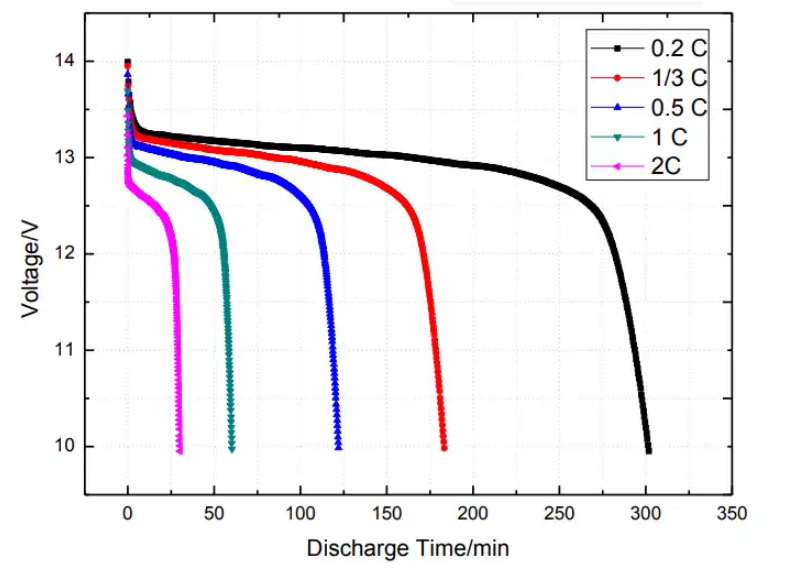
· C-Rate
In the arena of LiFePO4 vs Lithium-ion battery, the C-Rate emerges as crucial. Here, the Lithium-ion typically charges at a 1C rate, signifying 1-hour completion. Conversely, LiFePO4 commonly boasts a 1C-3C rate, providing fast recharge options. The variances create a diverse landscape for power needs.
· Constant Current
In the phase of constant current, Lithium-ion and LiFePO4 exhibit differences. While Lithium-ion batteries may experience thermal issues at higher currents, LiFePO4 batteries demonstrate resilience, enabling high constant currents, serving varied applications.
· Peak Power
In terms of peak power, the Lithium-ion battery excels due to its higher voltage. However, LiFePO4 counterparts provide robust and steady power output, vital for applications necessitating a dependable power source.
· Charge Time
Addressing the topic of charge time, the LiFePO4 stands out. This battery type charges quicker than traditional Lithium-ion. Shorter charge time benefits users desiring rapid turnaround times.
· Discharge Time
Regarding discharge time, LiFePO4 vs Lithium-ion charging metrics show differences. LiFePO4 often offers a slower discharge rate than Lithium-ion. This feature prolongs its operational time, leading to increased usage periods.
· Voltage Sag
Voltage sag, a decrease in voltage under load, affects battery performance. Lithium-ion batteries generally present more sag than LiFePO4. LiFePO4 delivers a consistent voltage under load, boosting system performance.
· Power Delivery
Power delivery is another differentiator. LiFePO4 maintains consistent power delivery throughout its discharge cycle, unlike Lithium-ion. LiFePO4 ensures reliable, constant energy supply, benefiting demanding environments.
· Coulombic Efficiency
Coulombic efficiency, a measure of energy returned during discharge compared to charge, varies between the batteries. LiFePO4 usually exhibits a higher coulombic efficiency, offering improved energy utilization.
· Battery Conditioning
Battery conditioning involves preparation for optimal operation. LiFePO4 batteries typically require less conditioning than Lithium-ion. Reduced conditioning efforts offer users convenience and time savings.
· Load Requirements
Depending on load requirements, both batteries serve distinct roles. Lithium-ion, with higher voltage, suits high load requirements. LiFePO4, with its steady power, caters to continuous low-load applications.
· Current Limits
Current limits dictate the safety and lifespan of batteries. LiFePO4 batteries generally handle higher current limits, providing safer, longer-lasting performance than Lithium-ion counterparts.
· Energy Extraction
In energy extraction, LiFePO4 outshines. With its low self-discharge rate, LiFePO4 allows more stored energy extraction, a definite advantage for long-term storage applications.
· Power Fade
Power fade, or the decline in power over time, is less evident in LiFePO4 batteries. This attribute endorses LiFePO4 for applications needing prolonged, consistent power supply.
· Recovery Effect
LiFePO4 exhibits a stronger recovery effect than Lithium-ion. After a high drain, LiFePO4 recovers quicker, enabling continuous operation, proving invaluable in continuous-use scenarios.
Comparing Lifespan: LiFePO4 vs Lithium-ion!
· Cycle Life
LiFePO4 vs Lithium-ion battery lifespan differs. Lithium-ion offers around 500-1000 cycles. In contrast, LiFePO4 extends to 2000-5000 cycles, showing superior durability.
· Calendar Life
Time affects both batteries. LiFePO4 enjoys longer calendar life, staying functional for 10 years. Conversely, lithium-ion might decline after 2-3 years, depending on usage.
· Aging Mechanisms
Lithium-ion ages due to chemical reactions. On the other hand, LiFePO4 resists aging better, enhancing stability and performance.
· Capacity Loss
LiFePO4 vs Lithium-ion charging impacts the capacity. Over time, lithium-ion loses more capacity, especially when overcharged. LiFePO4, more tolerant, resists capacity loss effectively.
· Cycle Count
Counting cycles, lithium-ion tends to fade after 1000, while LiFePO4 stays robust, surpassing 2000, indicating longer lifespan.
· DOD Cycles
DOD, or Depth of Discharge, impacts cycle life. LiFePO4 handles deeper discharges better, extending the number of cycles.
· State of Health
SOH, or State of Health, is more stable in LiFePO4 due to its sturdy chemistry, unlike lithium-ion.
· End of Life
EOL comes sooner for lithium-ion, while LiFePO4’s EOL extends due to robust chemistry and higher cycle life.
· Wear Leveling
Wear leveling is critical in batteries. LiFePO4 offers better wear leveling, ensuring longer lifespan compared to lithium-ion.
· Overdischarge
LiFePO4 is overdischarge-tolerant, while lithium-ion can sustain damage, affecting lifespan negatively.
· Battery Swelling
Swelling, common in lithium-ion, impacts lifespan. In contrast, LiFePO4 resists swelling, thereby extending life.
· Mechanical Stress
LiFePO4 outlasts lithium-ion under mechanical stress, ensuring longer lifespan and more reliable performance.
· Thermal Runaway
LiFePO4 withstands thermal runaway better than lithium-ion, thus ensuring safety and longevity.
· Material Fatigue
Material fatigue affects battery lifespan. LiFePO4 combats material fatigue better than lithium-ion, making it a longer-lasting option.
Thermal Performance of LiFePO4 and Lithium-ion!
· Heat Generation
LiFePO4 vs Lithium-ion battery tech involves heat. In full swing, a lithium-ion battery emits more heat. On the other hand, a LiFePO4 unit stays cooler. Lithium-ion heat is a result of high energy density. LiFePO4’s lower energy density helps keep temperatures low. So, LiFePO4 batteries stay cooler during use.
· Thermal Stability
Lithium-ion batteries face instability at high temperatures. The LiFePO4 counterpart remains stable, even in hot conditions. The chemical make-up of LiFePO4 offers better thermal control. For lithium-ion, high temperature can mean risk. LiFePO4 leads in thermal stability.
· Temperature Gradients
Temperature gradient deals with change in temperature over distance. Both LiFePO4 and lithium-ion batteries have different gradients. Lithium-ion batteries often have a higher gradient. This is due to their high energy density. The gradient in LiFePO4 batteries tends to be lower. A lower gradient means less heat difference across the battery.
· Heat Dissipation
Heat disperses from both batteries differently. Lithium-ion batteries need active cooling systems. In contrast, LiFePO4 batteries can handle heat without added systems. That’s because LiFePO4 can handle high temperatures better.
· Overheating Risk
When assessing LiFePO4 vs lithium-ion charging, overheating risks arise. Lithium-ion can overheat if charged quickly. Yet, LiFePO4 batteries stay cooler during quick charge. Overheating in lithium-ion can lead to damage. LiFePO4 is safer with a lower risk of overheating.
· Cooling Requirements
Lithium-ion batteries need more cooling. Often, they require added systems to maintain safe temperatures. LiFePO4 batteries have lower cooling needs. The stability at high temperatures means less cooling. So, LiFePO4 batteries have lower cooling requirements.
· Ambient Temperature
Ambient temperature plays a role in battery performance. In high ambient heat, lithium-ion batteries may struggle. LiFePO4, however, can withstand such heat. In colder settings, both types show similar performance. LiFePO4 is more adaptable to varying ambient temperatures.
· Thermal Conductivity
When considering LiFePO4 vs lithium-ion battery, thermal conductivity matters. LiFePO4 stands out, boasting 2.2 W/mK. In contrast, lithium-ion scores a mere 0.58 W/mK. Such numbers show LiFePO4 spreads heat better, enhancing its safety.
· Internal Resistance
Another key factor lies in internal resistance. Lithium-ion batteries often hold higher internal resistance, around 150 to 250 milliohms. LiFePO4, on the other hand, clocks in at a lower 45 milliohms, promoting more efficient energy transfer.
· Heat Transfer
In the realm of heat transfer, LiFePO4 leads the charge. Its high thermal conductivity facilitates swift heat dissipation. Lithium-ion batteries, however, trail behind, often leading to a build-up of heat.
· Thermal Cutoff
Thermal cutoff, crucial for safety, differs for both batteries. LiFePO4 cuts off at around 270 degrees Fahrenheit, while lithium-ion limits reach 194 degrees Fahrenheit. A higher cutoff for LiFePO4 translates to better heat handling capacity.
· Insulation Factors
Insulation is vital in controlling heat flow. Lithium-ion batteries employ Polyvinylidene Fluoride (PVDF) binders, which offer moderate insulation. Conversely, LiFePO4 uses Polyvinylidene Chloride (PVDC), providing superior insulation.
· Thermal Expansion
Every battery expands when heated. Lithium-ion batteries can expand by 10% in volume, potentially causing damage. LiFePO4 batteries undergo only a minimal 3% expansion, promoting stability under heat stress.
· Thermal Stress
Finally, thermal stress tests reveal differences too. Lithium-ion batteries can fail under 45°C, while LiFePO4 batteries withstand up to 60°C. By enduring greater heat, LiFePO4 ensures longer life and reliability.
Weighing the Matter: LiFePO4 vs Lithium-ion!
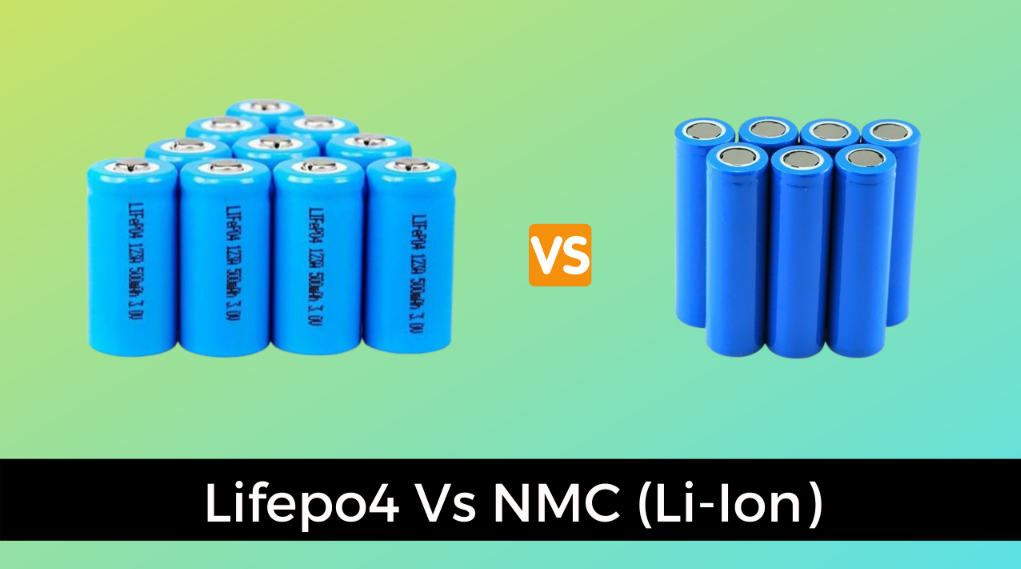
· Cell Weight
Understand LiFePO4 vs Lithium-ion weight difference is crucial. On average, a Lithium-ion cell weighs 45 grams. By comparison, a LiFePO4 cell weighs slightly more, at about 65 grams. This difference in weight can impact applications, especially where weight is a critical factor.
· Material Density
LiFePO4’s density sits around 3.6 g/cm3. Meanwhile, lithium-ion displays varying density, ranging from 1.0 to 2.64 g/cm3. LiFePO4, having a higher density, can be heavier, influencing design decisions.
· Packaging Weight
Packaging for LiFePO4 batteries usually brings more weight than Lithium-ion. LiFePO4’s rugged casing often tips scales at about 10 grams more. The packaging weight of Lithium-ion is generally less due to lighter casing materials.
· Load Impact
In high-load applications, battery weight matters. Greater weight, as found in LiFePO4 batteries, can affect device performance. For portable devices, lighter Lithium-ion batteries might be the better choice.
· Weight Distribution
Weight distribution in battery packs is another consideration. In electric vehicles, even weight distribution is critical. LiFePO4 batteries, being heavier, might require thoughtful placement to avoid imbalance.
· Power-to-Weight
The power-to-weight ratio reflects a battery’s performance. Lithium-ion batteries often provide a higher ratio than LiFePO4. However, remember that the choice should consider other factors, like safety and battery life.
· Heavier Cathodes
Cathodes in LiFePO4 batteries tip the scale more. LiFePO4’s cathodes weigh 170 grams per mole, whereas Lithium-ion cathodes measure lighter at 94 grams per mole. Heavier cathodes mean LiFePO4 batteries can handle high discharge rates better.
· Lighter Anodes
The anode’s weight can greatly influence battery performance. Lithium-ion batteries have lighter anodes, weighing only 6 grams per mole. In contrast, LiFePO4 has heftier anodes at 72 grams per mole, contributing to lower energy density.
· Structural Weight
A battery’s structure is important for safety. LiFePO4 batteries offer a robust structure, resulting in a heavier weight overall. This contrasts with Lithium-ion batteries that have lighter, less rigid structures but also less resilience to physical stress.
· Weight Changes
Over time, all batteries undergo weight changes. LiFePO4 batteries typically gain weight slower due to their robust structure. Conversely, Lithium-ion batteries are more susceptible to faster weight changes because of their less robust structure.
· Center of Gravity
The center of gravity impacts battery stability. LiFePO4 batteries have a lower center of gravity due to their heavy cathodes and anodes. Lithium-ion batteries, with lighter parts, have a higher center of gravity, influencing their stability and handling in applications like electric vehicles.
· Battery Size
The size of a battery relates directly to its weight. LiFePO4 batteries are typically larger, leading to an increased weight. Smaller, more compact Lithium-ion batteries, on the other hand, weigh less.
· Battery Form
Different forms, such as prismatic, pouch, or cylindrical, can impact battery weight. LiFePO4 batteries often come in prismatic or cylindrical forms, contributing to their higher weight. Lithium-ion batteries, usually found in pouch forms, tend to be lighter, favoring portability.
Power Efficiency: LiFePO4 vs Lithium-ion!
· Charge Efficiency
Charging batteries demands precision. With LiFePO4 vs Lithium-ion, understand that LiFePO4 batteries boast of an impressive charging efficiency of 95-98%. Now, compare that to the 85-95% of Lithium-ion. Despite a subtle difference, LiFePO4 has a clear lead. Quick charge times are also a standout feature, often surpassing Lithium-ion capabilities.
· Energy Conversion
LiFePO4 and Lithium-ion exhibit stark differences. LiFePO4 demonstrates higher conversion efficiency, approximately 95%, attributed to its inherent material properties. In comparison, Lithium-ion showcases a lower conversion rate around 80-90%. LiFePO4, with better conversion, optimizes power usage.
· Power Retention
LiFePO4 shines in power retention, lasting longer periods without needing a recharge. The unique lithium iron phosphate chemistry gives it the edge over standard Lithium-ion, making sure your devices keep running smoothly.
· Self-Discharge Rate
LiFePO4 outperforms with a self-discharge rate of about 3-5% per month. On the flip side, Lithium-ion experiences a higher rate, approximately 5-10% per month. Lower self-discharge equals extended battery life.
· Peak Power
Peak power is where Lithium-ion takes the lead. Despite LiFePO4’s benefits, Lithium-ion batteries can deliver high peak power for a brief period. This trait makes them ideal for applications requiring high instantaneous power.
· Constant Power
Contrarily, LiFePO4 excels in delivering constant power. Thanks to their chemical composition, these batteries provide steady power over time.
· Energy Utilization
The lifepo4 vs lithium-ion lifespan debate swings in favor of LiFePO4. With superior energy utilization, LiFePO4 ensures optimal performance, translating into a longer lifespan.
· Efficiency Loss
Batteries lose efficiency over time. Here, LiFePO4 again takes the cake with a lower efficiency loss rate than Lithium-ion. Even after years of use, LiFePO4 remains more efficient.
· Energy Consumption
LiFePO4 proves to be more energy-efficient. They consume less energy while charging or discharging, making them a greener choice compared to Lithium-ion batteries.
· Power Density
Lithium-ion batteries come out on top in terms of power density. They can store more power per unit volume, thereby serving devices demanding high power in a compact size.
· Performance Ratio
In the realm of performance, the LiFePO4 battery impresses with a high performance ratio. Even under rigorous conditions, LiFePO4’s performance ratio remains undeterred compared to Lithium-ion.
· Current Drain
LiFePO4’s chemistry ensures low current drain, giving it an upper hand. In contrast, Lithium-ion batteries may exhibit higher current drain, especially during peak loads.
· Power Factor
LiFePO4 batteries showcase a high power factor, emphasizing their efficiency and reliability. While Lithium-ion also possesses a good power factor, LiFePO4 usually emerges as the more robust option.
· Battery Drain
LiFePO4 batteries beat Lithium-ion in slow battery drain. So, if you’re seeking longevity, is lithium ion the same as lifepo4? The answer lies in your specific needs and the battery’s application. LiFePO4 may be a smarter choice for long-term, sustainable power.
Delving into the Performance Stability: LiFePO4 vs Lithium-ion!
· Voltage Stability
Diving into the difference between lithium-ion and LiFePO4, voltage stability emerges as a key factor. LiFePO4 batteries offer a steady 3.2V per cell. On the other hand, lithium-ion ones deliver around 3.7V. The lower voltage of LiFePO4 means a safer operation, reducing risk of overheating. Remember, too much heat harms batteries.
· Performance Consistency
Consistency matters in the battery world. Lithium-ion batteries lose capacity faster. Expect about 80% capacity after 500 cycles. On the flip side, LiFePO4 batteries maintain over 85% capacity after 2000 cycles. Longer lifespan offers better value for your investment.
· Cycle Stability
Speaking of lithium-ion vs lithium LiFePO4, cycle stability stands out. Lithium-ion batteries provide around 500-1500 cycles. However, LiFePO4 batteries impress with a whopping 2000-5000 cycles. Think about it. More cycles mean longer use and less frequent replacement.
· Load Stability
LiFePO4 batteries shine with load stability. Capable of handling high discharge rates, they excel in high-load applications. Conversely, lithium-ion batteries might struggle under such conditions.
· Thermal Stability
Here’s where LiFePO4 gets the edge. Better thermal stability ensures safer use. Lithium-ion batteries face safety issues at higher temperatures. In contrast, LiFePO4 withstands heat better, lowering fire risk. That’s peace of mind for you.
· Aging Stability
Aging impacts battery life. Lithium-ion batteries can age even when not in use. But, LiFePO4 batteries show less aging. Proper care can make them last over a decade. That’s years of reliable power supply.
· Voltage Drop
Lithium-ion batteries can suffer a sharp voltage drop when nearing empty. LiFePO4 batteries, however, maintain steady voltage till almost empty. So, you get reliable power till the last bit.
· Voltage Regulation
In comparing lithium ion vs lithium lifepo4, voltage stability differs. LiFePO4 batteries hold a constant voltage of 3.2V. Meanwhile, lithium-ion, at 3.7V, experiences drop-offs during discharge. Voltage stability leads to longer life for devices.
· Output Fluctuations
Lithium-ion cells experience more fluctuations. So, gadgets can abruptly shut down. On the contrary, LiFePO4 batteries, with fewer fluctuations, ensure a smooth operation of your devices.
· Charge Stability
In lithium-ion, a slight overcharge can cause damage. Conversely, LiFePO4 tolerates overcharge better, reducing the risk of harm. You can depend on LiFePO4 for safer charging.
· Cell Balancing
Balancing LiFePO4 cells is a straightforward process. Meanwhile, lithium-ion cells require complex mechanisms. Easy balancing contributes to the longevity of LiFePO4 batteries.
· Temperature Effects
LiFePO4 batteries exhibit remarkable temperature resilience. Yet, lithium-ion batteries suffer from decreased capacity in extreme conditions.
· Degradation Rate
With a slower degradation rate, LiFePO4 guarantees up to 2000 full charge cycles. However, lithium-ion delivers just about 500 to 1000 cycles. LiFePO4’s higher cycle life results in a longer battery life.
· State of Health
LiFePO4 batteries retain 80% capacity after many cycles. Conversely, lithium-ion batteries lose capacity faster. The state of health of LiFePO4 stays more robust over time.
Understanding the Safety Aspects: LiFePO4 vs Lithium-ion!
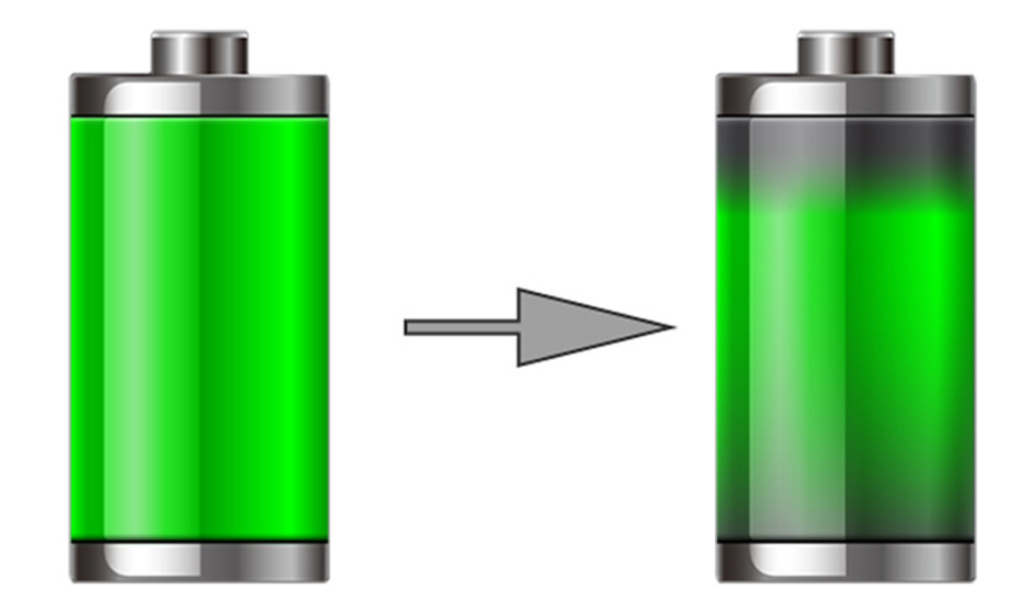
· Overcharge Protection
In energy storage, LiFePO4 vs lithium-ion price disparity arises from the added safety of LiFePO4. An overcharged LiFePO4 cell risks reduced lifespan but not combustion. Lithium-ion cells without proper protection might overheat or ignite when overcharged.
· Short Circuit
When short circuits happen, LiFePO4 batteries show high resilience. The heat generated is far less compared to lithium-ion. Less heat means less chance for dangerous reactions in the battery.
· Thermal Runaway
LiFePO4 batteries seldom face thermal runaway. That’s when a battery heats up, causing a cycle that leads to explosion or fire. Lithium-ion batteries carry a higher risk.
· Fire Risk
Unlike LiFePO4, lithium-ion batteries hold a higher energy density. This energy concentration can lead to serious fire risks if the battery’s integrity gets compromised.
· Venting Mechanism
To guard against internal pressure buildup, both battery types have venting mechanisms. Nonetheless, LiFePO4 batteries are less prone to excessive pressure due to their thermal stability.
· Safety Circuit
Lithium-ion batteries require advanced safety circuits to monitor voltage and temperature. Conversely, LiFePO4 batteries are inherently safer, allowing simpler, less costly safety circuit designs.
· Chemical Stability
LiFePO4 materials have a high chemical stability. Despite the higher lifepo4 vs lithium-ion energy density, the chemical volatility of lithium-ion batteries can present safety concerns.
· Rupture Risk
The case of a LiFePO4 battery is tougher, minimizing the chance of rupture. Lithium-ion batteries, though typically robust, may rupture under severe conditions, leading to leakage or fire.
· Leakage Prevention
LiFePO4 batteries hardly leak even under stress, thanks to their stable chemistry. On the other hand, lithium-ion batteries may leak under extreme conditions, which can be hazardous.
· Overdischarge Protection
LiFePO4 and lithium-ion batteries both need protection against overdischarge. LiFePO4, however, can withstand more discharge cycles, giving it an advantage in durability.
· Safety Standards
To ensure safety, LiFePO4 and lithium-ion batteries must meet rigorous safety standards. Still, LiFePO4 batteries tend to exceed these standards thanks to their stable chemical composition.
· Abuse Tolerance
LiFePO4 batteries have a high tolerance to misuse like overcharging or high temperatures. However, lithium-ion batteries can be more sensitive and may pose risks if mishandled.
· Temperature Cutoff
LiFePO4 batteries work well under broader temperature ranges. Lithium-ion batteries require strict temperature control, including a temperature cutoff to prevent overheating.
· Protective Housing
Both batteries employ protective housing for safety. Yet, LiFePO4 batteries’ more rugged and resilient nature lessens the dependency on external protective housing compared to lithium-ion counterparts.
The Influence of Temperature on LiFePO4 and Lithium-ion Performance!
· Cold Performance
At low temperatures, say -20°C, LiFePO4 vs Lithium-ion for e-bike battery displays differences. LiFePO4 retains 80% capacity while Lithium-ion falls to 60%. Low temps affect power output, limiting ebike speed.
· Hot Performance
In contrast, high temperatures, like 60°C, may harm Lithium-ion. These batteries show risk of damage. On the other hand, LiFePO4 shows strength, working fine in heat, without significant impact.
· Thermal Limits
LiFePO4 batteries withstand up to 70°C. Lithium-ion ones risk thermal runaway at 50°C. High thermal tolerance makes LiFePO4 safe.
· Temperature Cycling
Regular change in battery temperature affects lifespan. Cycling from 20°C to 45°C, Lithium-ion’s lifespan drops by 20%. LiFePO4, however, resists such changes better.
· Temperature Sensitivity
As for sensitivity, LiFePO4 beats Lithium-ion. LiFePO4 stays stable at extreme temperatures, displaying resilience. Lithium-ion, however, loses performance rapidly, highlighting its sensitivity.
· Optimal Temperature
LiFePO4 operates optimally at room temperature, about 20°C. Similarly, Lithium-ion gives best performance at 20°C – 25°C. Both batteries prefer temperate climates.
· Cold Cranking
For ebikes, cranking power matters. Is LiFePO4 better than Lithium-ion for cold cranking? Yes, LiFePO4 maintains more power at freezing temps, giving ebikes a smooth start even in cold.
· Temperature Coefficient
For ebike enthusiasts, knowing the temperature coefficient is key. LiFePO4’s coefficient sits around 0.005. In contrast, Lithium-ion hovers at 0.006. So, at high temperatures, LiFePO4 loses less energy. That means a longer, more enjoyable ride.
· Temperature Compensation
Compensation in batteries is critical. A lithium-ion battery compensates less than a LiFePO4. When temperatures rise, LiFePO4 provides more stable performance. So, your ebike can brave the heat more efficiently.
· Heat Effects
Here, let’s understand how heat affects batteries. LiFePO4 stays cool under stress. Lithium-ion? Not so much. Overheating can lead to lithium-ion failure. So, choose LiFePO4 for safety in hot conditions.
· Low-Temperature Charging
Moving to cold conditions, charging becomes tricky. LiFePO4 holds an edge, charging efficiently down to -20 degrees Celsius. Lithium-ion? Only till 0 degrees. LiFePO4 delivers reliable power, even in a frosty weather.
· Operating Temperature
Let’s examine operating temperature ranges. LiFePO4 thrives from -20 to 70 degrees Celsius. Lithium-ion, however, can operate only from -20 to 60 degrees. For a broader operating range, LiFePO4 wins hands down.
Storage Capabilities Comparison: LiFePO4 vs Lithium-ion!
· Storage Capacity
A LiFePO4 or lithium battery offers unique strengths. LiFePO4 packs 170mAh/g power. In contrast, lithium-ion impresses with 200mAh/g. So, lithium-ion holds more energy. But remember, LiFePO4’s robust nature offers a safer option.
· Self-Discharge
Batteries lose energy over time, called self-discharge. LiFePO4 excels here. In a month, LiFePO4 loses less than 3% charge. But lithium-ion might lose up to 8% charge. Clearly, LiFePO4 is the winner.
· State of Charge
Lithium-ion batteries need exact state of charge (SoC) levels. Too high or low can hurt performance. Yet, LiFePO4 handles varying SoC better.
· Long-Term Storage
LiFePO4 batteries have a longer lifespan in storage. Lithium-ion can degrade faster over time. For long-term storage, LiFePO4 has the edge.
· Energy Retention
After fully charging, LiFePO4 retains almost all energy for a month. Lithium-ion loses more over the same period.
· Optimal Storage
Both batteries prefer cool, dry storage. Yet, LiFePO4 withstands higher temperatures better. So, in extreme conditions, LiFePO4 has an advantage.
· Storage Losses
Over long periods, LiFePO4 loses fewer cycles than lithium-ion. This results in a longer lifespan. LiFePO4 is the better choice for storage longevity.
· Shelf Life
Lithium-ion batteries can degrade over time even without use. On the other hand, LiFePO4 remains stable for a longer duration.
· Charge Preservation
LiFePO4 preserves the charge better over time. In contrast, lithium-ion loses charge faster. As a result, LiFePO4 stands superior in charge preservation.
· Temperature Effects
Both batteries face challenges at extreme temperatures. But, LiFePO4 tolerates high temperatures better than lithium-ion.
· Capacity Fade
All batteries lose capacity over time. Yet, LiFePO4 vs lithium-ion lifespan shows LiFePO4’s slower capacity fade. LiFePO4 is the preferred choice for long-term usage.
· Storage Conditions
Ideal conditions for both batteries are similar. Yet, LiFePO4 can tolerate more variation. LiFePO4 offers greater flexibility in storage conditions.
· Storage Voltage
Storage voltage varies between batteries. LiFePO4 functions at 3.2V, while lithium-ion at 3.7V. This difference impacts energy density and device compatibility.
· Battery Aging
Aging affects both batteries. Yet, LiFePO4 exhibits less aging than lithium-ion. Consequently, LiFePO4 extends its usable life over lithium-ion.
Cycle Life Comparison: LiFePO4 vs Lithium-ion!
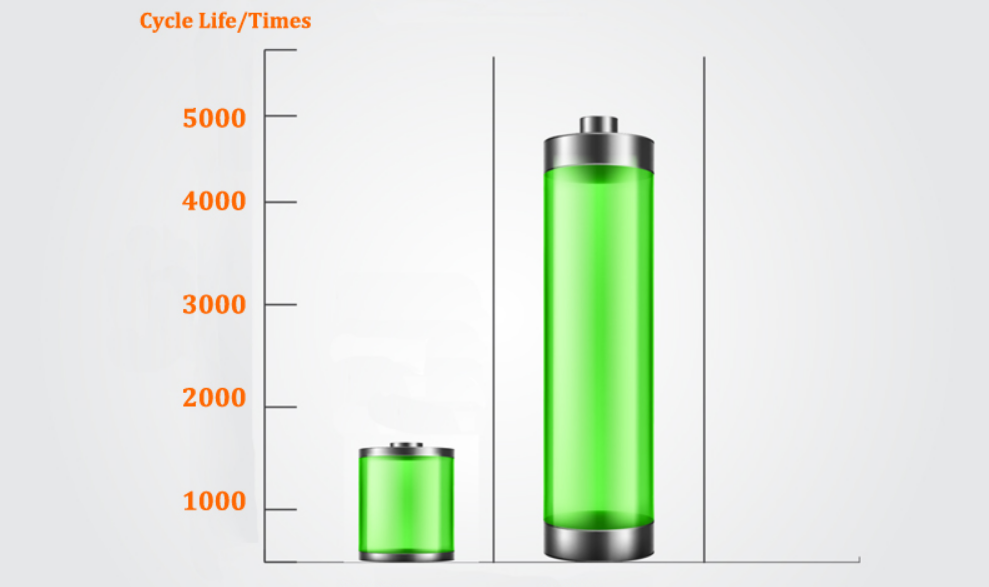
· Storage Capacity
A LiFePO4 or lithium battery offers unique strengths. LiFePO4 packs 170mAh/g power. In contrast, lithium-ion impresses with 200mAh/g. So, lithium-ion holds more energy. But remember, LiFePO4’s robust nature offers a safer option.
· Self-Discharge
Batteries lose energy over time, called self-discharge. LiFePO4 excels here. In a month, LiFePO4 loses less than 3% charge. But lithium-ion might lose up to 8% charge. Clearly, LiFePO4 is the winner.
· State of Charge
Lithium-ion batteries need exact state of charge (SoC) levels. Too high or low can hurt performance. Yet, LiFePO4 handles varying SoC better.
· Long-Term Storage
LiFePO4 batteries have a longer lifespan in storage. Lithium-ion can degrade faster over time.
· Energy Retention
After fully charging, LiFePO4 retains almost all energy for a month. Lithium-ion loses more over the same period.
· Optimal Storage
Both batteries prefer cool, dry storage. Yet, LiFePO4 withstands higher temperatures better. So, in extreme conditions, LiFePO4 has an advantage.
· Storage Losses
Over long periods, LiFePO4 loses fewer cycles than lithium-ion. This results in a longer lifespan. LiFePO4 is the better choice for storage longevity.
· Shelf Life
Lithium-ion batteries can degrade over time even without use. On the other hand, LiFePO4 remains stable for a longer duration.
· Charge Preservation
LiFePO4 preserves the charge better over time. In contrast, lithium-ion loses charge faster. As a result, LiFePO4 stands superior in charge preservation.
· Temperature Effects
Both batteries face challenges at extreme temperatures. But, LiFePO4 tolerates high temperatures better than lithium-ion.
· Capacity Fade
All batteries lose capacity over time. Yet, LiFePO4 vs lithium-ion lifespan shows LiFePO4’s slower capacity fade.
· Storage Conditions
Ideal conditions for both batteries are similar. Yet, LiFePO4 can tolerate more variation.
· Storage Voltage
Storage voltage varies between batteries. LiFePO4 functions at 3.2V, while lithium-ion at 3.7V. This difference impacts energy density and device compatibility.
· Battery Aging
Aging affects both batteries. Yet, LiFePO4 exhibits less aging than lithium-ion. Consequently, LiFePO4 extends its usable life over lithium-ion.
| Criteria | LiFePO4 Batteries | Lithium-ion Batteries |
| Storage Capacity | High: 100-150 Wh/kg | Moderate: 150-200 Wh/kg |
| Self-Discharge | Low: ~3-5% per month | Moderate: ~5-10% per month |
| State of Charge (SOC) | Stable: ~3.2V | Variable: ~3.6V-4.2V |
| Long-Term Storage | More resilient, lower capacity loss | More susceptible to capacity loss |
| Energy Retention | High: ~85-95% over 1 year | Moderate: ~80-90% over 1 year |
| Optimal Storage | Cooler temperatures: ~0-20°C | Moderate temperatures: ~20-25°C |
| Storage Losses | Lower: ~2-3% annually | Higher: ~5-10% annually |
| Shelf Life | Longer: ~8-10 years | Shorter: ~5-7 years |
| Charge Preservation | Higher: ~85-90% over 1 year | Lower: ~75-85% over 1 year |
| Temperature Effects | More stable under high temperatures | More susceptible to high temperatures |
| Capacity Fade | Lower: ~10% over 1,000 cycles | Higher: ~20% over 1,000 cycles |
| Storage Conditions | Less sensitive to conditions | More sensitive to conditions |
| Storage Voltage | Lower: ~3.3V | Higher: ~3.7V |
| Battery Aging | Slower: ~5% capacity loss over 1 year | Faster: ~10% capacity loss over 1 year |
Table on Cycle Life Comparison: LiFePO4 vs Lithium-ion!
Battery Maintenance: LiFePO4 vs Lithium-ion!
· Charging Habits
Lithium ion vs lithium LiFePO4 batteries need different care. You charge lithium-ion up to 4.2V per cell, but LiFePO4 only needs 3.65V per cell. No trickle charging needed for LiFePO4, lithium-ion needs top-ups. Your battery lasts longer with careful charging.
· Discharging Practices
LiFePO4 shows strength in discharging, handling up to 3C continuous. That means a 10Ah battery can give 30A. Lithium-ion has less, only 2C. The lower discharge limit, 2.5V for lithium-ion and 2.8V for LiFePO4, impacts longevity.
· Cell Balancing
Balancing cells makes a difference. LiFePO4 cells stay balanced longer. In contrast, lithium-ion cells drift apart. A BMS, or battery management system, aids in keeping balance, extending battery life.
· Storage Conditions
Storage matters too. Both the types like cool, dry places. Yet, LiFePO4 can handle wider temperature ranges. Lithium-ion may struggle, especially in heat. Always store the batteries at 40-50% charge for safety and longevity.
· Regular Inspection
Regular checks help catch issues. Check for bulges, leaks, or rust on both battery types. Inspect the voltage of LiFePO4 and lithium-ion batteries. Immediate action can prevent damage and prolong battery life.
· Battery Cleaning
Keeping batteries clean is important. Dust, dirt, or moisture can harm both LiFePO4 and lithium-ion batteries. Use a clean, dry cloth for wiping down. Ensure terminals are corrosion-free for best performance.
· Calibration
Calibration helps batteries perform their best. Run the battery down, then charge to full. Do this every few months. Both the LiFePO4 and lithium-ion batteries benefit from proper calibration.
· Battery Recycling
Eco-friendly battery solutions remain vital. Here, LiFePO4 outperforms Lithium-ion. Upon ending battery life, LiFePO4 components are less hazardous. They hold potential for future recycling programs. In contrast, lithium-ion battery components often go to landfills. LiFePO4 clearly indicates a greener battery option.
· Avoid Overcharging
Lifespan of batteries depends on careful charging. For lithium-ion, overcharging leads to diminished capacity. On the other hand, LiFePO4 withstands overcharging better, safeguarding battery life. LiFePO4 proves a safer option, ensuring longer service life.
· Avoid Overdischarging
Both battery types face overdischarge issues. Yet, LiFePO4 has a built-in circuit stopping discharge at low voltage. Lithium-ion lacks similar safeguards. Consequently, LiFePO4 scores higher in overdischarge protection, extending battery longevity.
· Temperature Control
LiFePO4 stands superior in heat tolerance. Operation in high temperatures leads to minimal performance drop. Conversely, lithium-ion displays significant efficiency loss at high temperatures. LiFePO4 affords improved thermal stability, ensuring reliable operation.
· Battery Replacement
Frequent replacement impacts battery cost. Lithium-ion batteries usually need replacement after 2-3 years. LiFePO4, however, lasts up to 10 years before replacement. LiFePO4 presents an economical choice, reducing overall battery expenses.
· Safety Checks
Safety matters in battery usage. LiFePO4 possesses an excellent safety record. In contrast, lithium-ion has risks of explosion and fire. LiFePO4 provides a safer battery alternative, promoting user peace of mind.
· Firmware Updates
Both battery types require regular firmware updates. These ensure optimal performance. While lithium-ion updates are routine, LiFePO4 updates prove less frequent. LiFePO4 offers simplified maintenance, enhancing user convenience.
Charging Protocols: LiFePO4 vs Lithium-ion!
· CC-CV Charging
A common charging method, CC-CV, varies between LiFePO4 and Lithium-ion. LiFePO4 requires 3.65V for full charge. Lithium-ion needs 4.2V. Safety dictates strict voltage control.
· Fast Charging
LiFePO4 excels here. The battery can reach full charge in just an hour. Lithium-ion might take up to three hours. Speed makes a difference in daily use.
· Trickle Charging
Less used with LiFePO4 due to high efficiency. In contrast, lithium-ion benefits from slow, steady charging. It helps prolong battery life.
· Charge Termination
LiFePO4 uses voltage for charging end. Lithium-ion stops at low current. Understanding charge termination is vital for battery health.
· Charging Speed
The ability to absorb energy quickly makes LiFePO4 superior. Lithium-ion charges slower, needing patience. Your energy needs will guide your choice.
· Charging Efficiency
LiFePO4 stands out, converting almost 95% of energy. Lithium-ion achieves around 85%. Higher efficiency means less energy waste.
· Charging Temperature
Heat affects battery life. LiFePO4 performs well in high temperatures. Lithium-ion prefers cooler environments. Consider your climate before deciding.
· Charger Compatibility
LiFePO4 and Lithium-ion need specific chargers. An incorrect charger risks battery damage. Proper equipment is non-negotiable for battery safety.
· Charge Controller
Essential for solar charging, controllers differ for each battery. LiFePO4 controllers handle high voltage, Lithium-ion controllers deal with lower voltage. A correctly matched controller ensures optimal charging.
· Charging Cycles
LiFePO4 lasts longer with up to 2000 cycles. Lithium-ion typically reaches 1000 cycles. More cycles mean longer battery life.
· Overcharge Prevention
LiFePO4 is more resistant, tolerating slight overcharges. Lithium-ion needs careful monitoring to prevent overcharging. Overcharge prevention safeguards your investment.
· Charger Power
High power chargers suit LiFePO4. Lower power serves Lithium-ion. Choosing the right charger is necessary for efficient charging.
· Charging Limits
LiFePO4 tolerates higher limits. Lithium-ion requires careful limit management. Know your battery’s limits for safe charging.
Discharge Characteristics: LiFePO4 vs Lithium-ion!
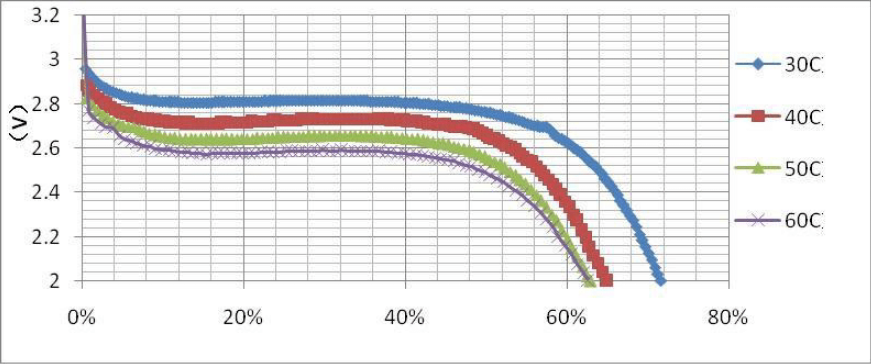
· Constant Discharge
On one hand, LiFePO4 batteries discharge at a steady 3.2V. On the other hand, Lithium-ion cells maintain about 3.7V. Both reveal robust power delivery. Each offers unique benefits in specific applications.
· Pulse Discharge
LiFePO4 batteries excel in brief, high power demands. In contrast, lithium-ion batteries prefer consistent loads. Both provide adequate pulse discharge performance, depending on usage requirements.
· Discharge Curve
LiFePO4’s discharge curve is flat, meaning voltage drops little during use. Meanwhile, lithium-ion’s discharge curve slopes down, with voltage dropping more noticeably.
· Discharge Rate
LiFePO4 can handle higher discharge rates, up to 3C. Lithium-ion, on the other hand, prefers lower rates, often less than 1C. Application demands dictate battery choice.
· Peak Discharge
LiFePO4 can deliver high peak currents. In comparison, lithium-ion requires more care to prevent damage. Each has a role in diverse environments.
· Voltage Sag
Under high load, LiFePO4 shows less voltage sag. Lithium-ion may experience more voltage sag, affecting performance in high-demand situations.
· Low Discharge
LiFePO4 operates well under low discharge conditions. On the contrary, lithium-ion prefers moderate discharge to maintain capacity.
· Discharge Cutoff
LiFePO4 has a higher discharge cutoff, typically at 2.5V. Lithium-ion cuts off at around 3.0V. Each ensures battery longevity with proper management.
· Discharge Efficiency
LiFePO4 offers high discharge efficiency, up to 95%. Lithium-ion’s efficiency is slightly lower, usually around 85-90%. Both serve energy-efficient applications well.
· Load Effects
Under load, LiFePO4’s voltage remains stable. Lithium-ion may show voltage drop. Stability is key in high-load situations.
· Depth of Discharge
LiFePO4 permits deep discharges, often 80% or more. Lithium-ion prefers shallower discharges, usually 50%. Depth affects cycle life.
· Discharge Time
LiFePO4’s longer discharge time proves advantageous in slow drain applications. Lithium-ion suits quick discharge needs. Each serves different use-case scenarios.
· High Discharge
LiFePO4 excels in high-discharge settings. Lithium-ion prefers moderate discharge levels. Varied uses require different discharge characteristics.
· End of Discharge
At the end of discharge, LiFePO4’s voltage remains steady. Lithium-ion’s voltage drops, signaling the need for recharging. Proper end-of-discharge management ensures battery health.
Performance in Various Applications: LiFePO4 vs Lithium-ion!
· EV Performance
In electric vehicles (EVs), battery selection matters. LiFePO4 batteries outshine lithium-ion in safety and stability, hence less risk of thermal runaway. Lithium-ion, on the other hand, provides high energy density, allowing for longer EV range. Both, nonetheless, offer rapid charging capabilities.
· Portable Electronics
For portable electronics, lithium-ion batteries reign. Their compactness and high energy density make them ideal. LiFePO4, while safe and reliable, has lower energy density, making devices bulkier. However, LiFePO4’s longer lifespan can be a plus for less mobile electronics.
· Energy Storage
LiFePO4 batteries excel in home energy storage battery systems. Their longer cycle life, inherent safety, and excellent thermal stability make them perfect. Lithium-ion, while offering high energy density, faces challenges with thermal management and shorter lifespan.
· Grid Applications
For grid applications, LiFePO4 scores high on reliability and durability. Lithium-ion, however, struggles due to shorter lifespan and thermal issues, particularly in high-demand scenarios.
· High Drain Devices
High drain devices favor lithium-ion due to their superior discharge rates. LiFePO4, with lower energy density and discharge rates, doesn’t fit as well.
· Low Drain Devices
Low drain devices benefit from LiFePO4’s longevity and stability. Lithium-ion’s higher energy density isn’t as crucial in these applications.
· Solar Applications
Solar applications lean towards LiFePO4, prized for its lifespan and thermal stability. Lithium-ion, while still used, has drawbacks in terms of cycle life.
· High Temperature
At high temperatures, LiFePO4 offers excellent performance due to high thermal stability. Lithium-ion batteries can degrade quickly under such conditions.
· Low Temperature
In cold conditions, both the LiFePO4 and lithium-ion performance declines. However, lithium-ion handles low temperatures slightly better.
· Heavy Duty
For heavy-duty tasks, lithium-ion’s high energy density and discharge rates are often favored. LiFePO4, while more stable, has less energy output.
· Light Duty
Light duty applications can benefit from LiFePO4’s stability and lifespan. Lithium-ion’s high energy density isn’t as necessary here.
· Cycle Demand
In applications with high cycle demands, LiFePO4 shines due to superior cycle life. Lithium-ion tends to degrade faster in such situations.
· Standby Use
Standby use favors LiFePO4 because of its slow self-discharge rate. Lithium-ion batteries may drain quicker when not in use.
· Intermittent Use
For intermittent use, LiFePO4’s longer lifespan makes it a better choice. Lithium-ion’s higher self-discharge rate may prove disadvantageous here.
Delving into the Voltage Parameters: LiFePO4 vs Lithium-ion!
· Nominal Voltage
LiFePO4 battery has a nominal voltage of 3.2V. On the other hand, Lithium-ion cell stands at 3.7V. The lithium-ion battery offers higher energy density. Such a difference manifests in the gadget’s performance where a higher voltage leads to more power.
· Peak Voltage
Lithium-ion batteries can reach a peak voltage of 4.2V during charging. Conversely, LiFePO4 batteries achieve a maximum of 3.65V. Consequently, lithium-ion batteries can store more energy, enhancing device run time.
· Cutoff Voltage
LiFePO4 batteries have a cutoff voltage of 2.5V. Lithium-ion batteries dip to around 3.0V. The lower the cutoff voltage, the better the battery longevity, makes LiFePO4 a choice for long-term use.
· Charge Voltage
For LiFePO4 batteries, the charge voltage usually maxes at 3.65V. In comparison, Lithium-ion batteries charge up to 4.2V. Higher charge voltage translates to greater energy storage potential, lithium-ion batteries leading in this respect.
· Discharge Voltage
In lithium-ion cells, the discharge voltage is about 3.0V. LiFePO4 batteries feature a lower discharge voltage, about 2.5V. This implies LiFePO4 batteries provide a longer discharge cycle, hence better service life.
· Voltage Sag
Lithium-ion cells display more voltage sag, especially under heavy loads. LiFePO4 batteries show less voltage sag, offering consistent power delivery even under strenuous conditions.
· Voltage Range
Lithium-ion batteries operate within a voltage range of 3.0V to 4.2V. For LiFePO4, the range is 2.5V to 3.65V. LiFePO4 batteries provide a broader operating range, thus, a more stable power supply.
· Voltage Regulation
Lithium-ion cells require rigorous voltage regulation due to their narrow voltage range. LiFePO4 batteries, with a broader voltage range, need less regulation, simplifying the management systems.
· Open Circuit Voltage
LiFePO4 cells have lower open-circuit voltage (around 3.3V) compared to Lithium-ion (approximately 3.6V). This leads to lower energy density in LiFePO4 batteries.
· Load Voltage
Under load, LiFePO4 batteries maintain a higher voltage than lithium-ion cells. This higher load voltage results in more efficient power delivery, especially under high loads.
· Voltage Stability
LiFePO4 cells boast superior voltage stability, owing to their broader voltage range. Lithium-ion batteries, in contrast, experience more voltage fluctuations, necessitating more complex management systems.
· Internal Resistance
LiFePO4 batteries usually exhibit lower internal resistance, ensuring better efficiency and longer lifespan. Lithium-ion batteries have a higher internal resistance, potentially reducing their efficiency and overall life.
· Voltage Drop
Upon load application, lithium-ion cells may experience significant voltage drop. LiFePO4 batteries, with their lower internal resistance, suffer less voltage drop, ensuring steady power delivery.
· Voltage Thresholds
Lithium-ion cells need strict monitoring to avoid surpassing their voltage thresholds, both high and low. LiFePO4 batteries offer more flexibility, with wider voltage thresholds, easing their management.
Evaluating Self-Discharge Rates: LiFePO4 vs Lithium-ion!
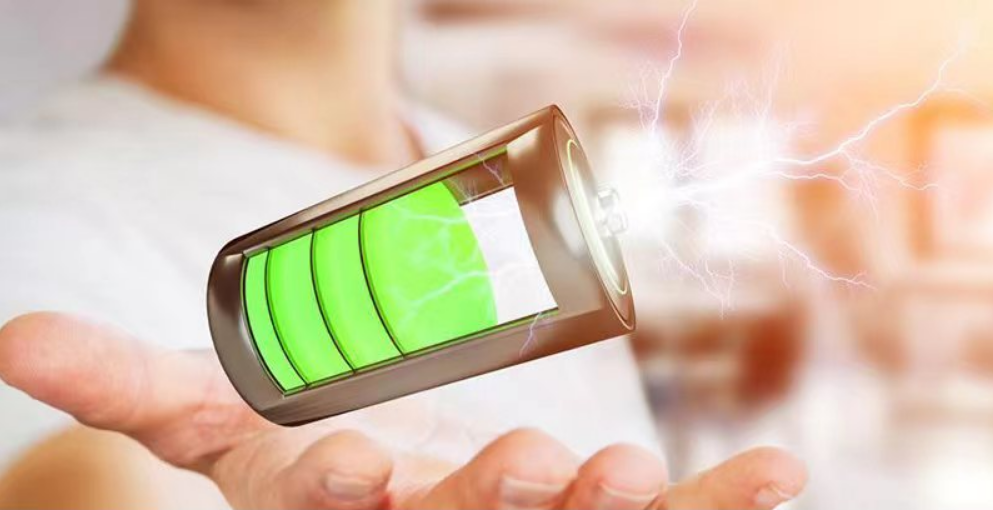
· Discharge Rate
LiFePO4 batteries shine with a discharge rate of 1% per month. Contrastingly, Lithium-ion batteries drain faster, having a 2% discharge rate per month. That’s twice as quick! LiFePO4 batteries are more reliable for long-term use.
· Energy Loss
Lithium-ion batteries tend to lose more energy during charging. A loss of 5 watts is typical. On the flip side, LiFePO4 batteries lose less, typically around 2 watts. Less energy loss translates to more efficiency.
· Leakage Current
For LiFePO4 batteries, the leakage current is extremely low, usually less than 3 milliamperes (mA). In comparison, Lithium-ion batteries can leak around 5 mA. Lower leakage means better energy retention.
· Storage Time
LiFePO4 batteries can be stored for about 10 years before the charge depletes. In contrast, Lithium-ion batteries typically last for 5 years in storage. A longer storage time offers more convenience.
· Storage Temperature
LiFePO4 batteries withstand extreme temperatures, ranging from -45°C to 85°C. Lithium-ion batteries struggle under similar conditions, with a range of -20°C to 60°C.
· Capacity Retention
LiFePO4 batteries retain almost 80% of the initial capacity after 2000 cycles. Meanwhile, Lithium-ion batteries maintain about 70% capacity after 1000 cycles. Higher capacity retention extends the battery’s lifespan.
· Standby Use
LiFePO4 batteries excel in standby use, lasting up to a decade. Lithium-ion batteries lag, with standby lifespans averaging 5 years. Longer standby use promotes cost-effectiveness.
· Shelf Life
With 10-20 years of shelf life, LiFePO4 batteries outlast Lithium-ion batteries that typically have a shelf life of about 2-3 years. Longer shelf life ensures value for money.
· Charge Preservation
LiFePO4 batteries preserve charge better, maintaining about 90% of the charge over a month. Lithium-ion batteries, however, preserve around 70% over the same period. Better charge preservation ensures more reliable power supply.
· Chemical Stability
LiFePO4 batteries are more chemically stable due to the iron phosphate lifepo4 battery composition. Lithium-ion batteries, however, can be unstable, especially when overcharged. Greater chemical stability provides safer operations.
· Aging Effects
The aging effects are lesser in LiFePO4 batteries, which can function up to 10 years. Lithium-ion batteries show signs of aging after 2-3 years. Less susceptibility to aging prolongs battery usability.
· Inactivity Period
LiFePO4 batteries can endure inactivity for up to a decade without significant loss of charge. Lithium-ion batteries, on the other hand, suffer noticeable charge loss after a year of inactivity. Resistance to inactivity is advantageous for intermittent usage.
· High Temperature
LiFePO4 batteries tolerate high temperatures, up to 85°C, without serious degradation. Lithium-ion batteries, however, degrade faster at temperatures exceeding 60°C. High-temperature endurance is crucial for harsh environmental conditions.
· Long-term Storage
LiFePO4 batteries lead in long-term storage, maintaining their charge for up to a decade. Lithium-ion batteries, in contrast, last only half as long in storage. Longer storage time means more reliability for intermittent use.
Battery Sizing: LiFePO4 vs Lithium-ion!
· Cell Size
In LiFePO4 cells, size ranges from 26650 to 32700. For Lithium-ion, 18650 battery pack is common. Smaller LiFePO4 cells are safer, yet larger lithium-ion cells pack more energy. Remember, cell size influences battery design and performance.
· Capacity Ratings
LiFePO4 cells hold 3000 to 3300mAh of energy. Lithium-ion cells hold up to 3600mAh. Despite lower capacity, LiFePO4 cells offer longer lifecycles. Clearly, capacity is vital in battery selection.
· Packaging Size
Packaging size matters for battery integration. LiFePO4 batteries require more space due to larger cells. In contrast, lithium-ion batteries are compact, ideal for space-constrained applications.
· Battery Dimensions
LiFePO4 batteries measure 26.2mm in diameter, 65.3mm in height. Lithium-ion are 18mm in diameter, 65mm in height. Differences in dimensions impact energy storage and application suitability.
· Power Requirements
Power needs affect choice. High-drain devices prefer lithium-ion due to higher energy density. Low-drain devices work well with LiFePO4, thanks to steady discharge rates.
· Energy Demand
Devices with high energy demand favor lithium-ion for greater energy density. LiFePO4, with lower energy density, suits applications requiring safety and longevity.
· Cell Configuration
LiFePO4 batteries use prismatic cells. Lithium-ion batteries mostly use cylindrical cells. Cell configuration shapes battery size, energy density, and safety.
· Weight Limitations
LiFePO4 batteries weigh more than lithium-ion due to bigger cell size. For lightweight applications, lithium-ion is a better option.
· Volume Limitations
Lithium-ion batteries take up less volume than LiFePO4. This makes lithium-ion an excellent choice for space-limited devices.
· Size Efficiency
Lithium-ion batteries score high on size efficiency, packing more energy into a smaller volume. LiFePO4, while less efficient size-wise, has merits in safety and lifecycle.
· Size Impact
Size impacts battery performance and application. Smaller lithium-ion batteries suit mobile devices. Larger LiFePO4 batteries are perfect for stationary energy storage systems.
· Battery Footprint
Lithium-ion batteries have a smaller footprint, ideal for compact designs. In contrast, LiFePO4 batteries require more space, fitting well into larger systems.
· Sizing Calculation
Sizing calculations for LiFePO4 consider longer lifespan and safety margins. Lithium-ion calculations emphasize energy density and cycle life.
· Battery Volume
Lithium-ion batteries offer high energy density in a small volume. On the other hand, LiFePO4’s larger volume provides robust safety and longevity.
Conclusion
In the dynamic world of energy storage, LiFePO4 and Lithium-ion batteries hold significant places. Equipped now with rich details about each, visit Buzzupbattery.com for even more enlightening discoveries. Forge ahead in your investigation of these potent power reservoirs and their role in shaping technology’s future.


